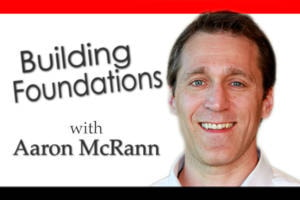A few days ago somebody asked me what the Community Foundation of the South Okanagan-Similkameen’s per cent administration costs were. I told her our administration fee was 1.5 per cent.
That sounds really impressive, right? Especially when you compare that number to the administration rates you’ll find at other charities. Most charities report costs of administration to be in the 18-25 per cent range. So our 1.5 per cent is looking pretty good.
But here’s the problem: community foundations are a dramatically different operation from an environmental charity, or a mental health charity, or just about any other non-profit. You simply can’t directly compare our admin rate with another charity.
The simple question about admin rates is deeply flawed, but it’s very persistent, permeating our cultural understanding of the value that charities bring to our communities. We measure businesses on the bottom line, on how much net profit they produce. But how do you measure the social profit of saving an endangered species or supporting the local symphony? This might be why people focus on the cost of administration; at least it’s something that can be quantified. But to paraphrase Einstein: “not everything that matters can be measured, and not everything that can be measured matters.”
This focus on administration costs also highlights a deeply held belief in our society that people working in the non-profit sector should be paid less than those working in the for-profit sector. Non-profit activist Dan Pallotta said it best in his TED Talk when he said, “we have a visceral reaction to the idea that anyone would make very much money helping other people. Interesting that we don’t have a visceral reaction to the notion that people would make a lot of money not helping other people. You know, you want to make $50 million selling violent video games to kids, go for it.”
There is an expectation that people who work in charity must make a choice between making a lot of money and looking after their families, or making less money and looking after the world. There is an argument to be made that some of these expectations come from the historical sense that this is the “voluntary sector.” Another argument is that it has something to do with the fact that 70 per cent of employees in non-profits are women. It is probably a combination of all of these things.
At the community foundation, we review between 80 and 100 charities each year during our annual granting cycle. With more than $3 million in grants to charities, we have seen a lot of financial statements over the years. With the very rarest of exceptions, we can say with confidence that the number one issue facing most charities is “capacity.” Most charities could and would have a much larger impact if they could hire more people, pay their people a competitive wage to attract the best talent, invest in infrastructure and systems that would make them more efficient, and advertise and market their services to the community. But these things are considered the “overhead” that most donors don’t want to support.
All of this is not to suggest that charities do not need to carefully watch their costs. Like any other business, a charity needs to be efficient and responsible in how it manages its budget. The issue is that sometimes not spending on overhead is the least efficient, and least responsible, course of action. We all know “time is money” and changing the world takes time.
Aaron McRann is the executive director of the Community Foundation of the South Okanagan-Similkameen and a guest columnist for the Penticton Western News. For more information on the foundation visit www.cfso.net
